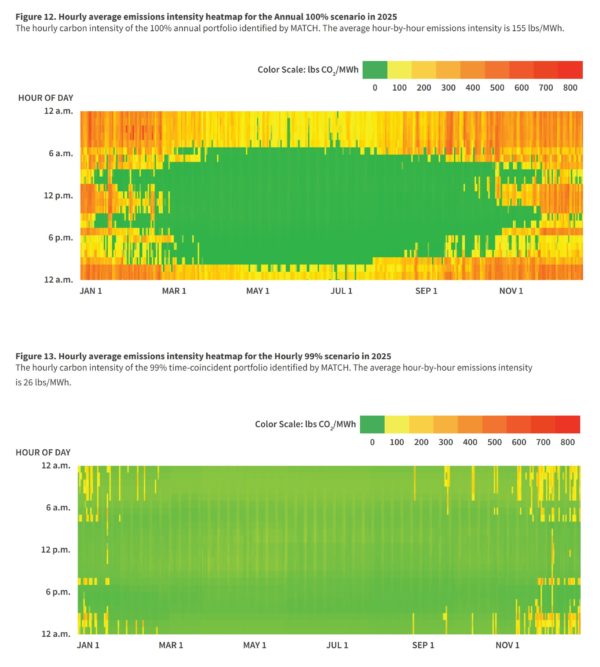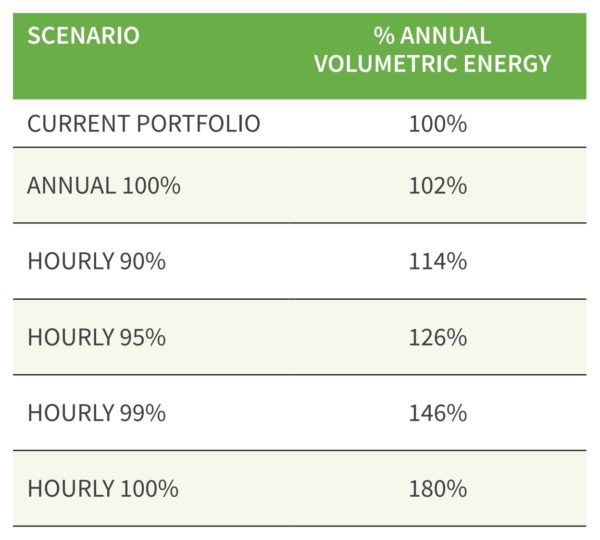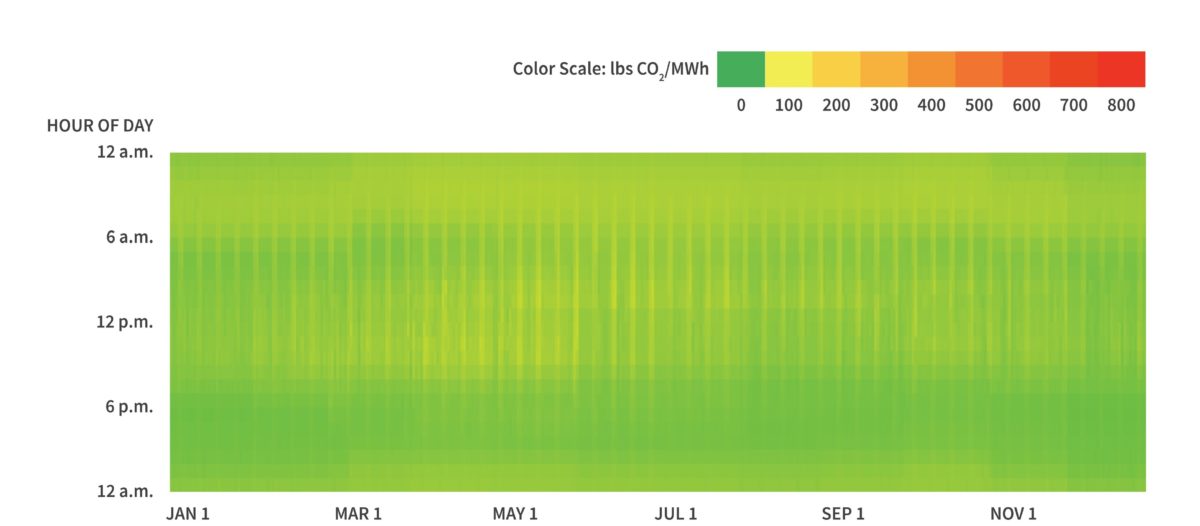Peninsula Clean Energy is a community-controlled, not-for-profit Community Choice Aggregation (CCA) program that serves 20 cities and towns in San Mateo County, Calif., and it’s setting an aggressive pace.
The program has developed and released at no cost a tool called MATCH (Matching Around-The-Clock Hourly energy). The tool projects how the CCA will reach their 100% clean energy goals by 2025. In its analysis, the group found that in order to supply around 3,700 GWh of clean energy each year, it will need to procure a capacity of nearly double that amount.
Making the final leap from 99% to 100% comes at a cost. Peninsula found that while moving to a 100% clean energy supply increases costs by 27%, a 99% clean energy supply would increase costs by only 9%. These cost increases are based on the current trajectory of their portfolio, which is on track to procure 71% of its hourly time-matched electricity by 2025.

In a world where Peninsula can sell excess renewable energy credits and resource adequacy from its excess capacity, the pricing for its customers will be much lower. However, as Peninsula notes, some time in the future clean credits will no longer carry value because everyone will have clean energy. At that point, we will need to do something else with the excess electricity (like transmission, storage, EV charging, hydrogen production, etc). For Peninsula’s customers in 2025, however, the expected resale will produce a financial gain that benefits their wallets. That’s because in 2025 there will still be plenty of ratepayers seeking to purchase RECs to offset their carbon sins.
The region’s 810,000 residents, who hold 310,000 residential and business accounts, should be happy to learn that a 99% hourly match of clean electricity will increase the cost of their electricity by only 2%. And that last 1% bump, to reach 100%, would add only 10% to the total cost of electricity. At 100% clean electricity, Peninsula will be able to resell 75% of their renewable energy credits.
Key to understanding the accounting behind ‘matching’ is the concept of annual versus hourly time-matching. Peninsula currently gets 100% of its annual electricity from renewable and carbon free sources; however, “in the hours where renewable supply is insufficient to meet customer demand, generic energy from the system is used to serve customer demand. The generic energy is typically from fossil fuel generation, which, in California, is mainly from methane gas.”

So, while Peninsula’s annual renewable energy is already at 100%, this is achieved by purchasing the same number of clean GWh that are consumed in a year irrespective of when energy is actually consumed. In the 100% hourly matching scenario, each hour of customer demand must be supplied by renewable energy that is either generated or dispatched from storage in that same hour.
The MATCH model that did all of this work was developed by Peninsula along with Jesse Jenkins of Princeton University’s Andlinger Center for Energy & Environment. It is open source and free for public use.

By 2025, Peninsula expects the majority of its generation to be produced by solar power, either directly at time of generation or via energy storage. That last 1% comes with additional costs beyond a price increase of 18%. It comes with excess generation capacity:
Matching the last 1% of demand requires procuring 34% more supply. That is, for our load of approximately 3,700 GWh per year, in order to serve the last 37 GWh of demand, we must procure an additional 1,300 GWh of supply.
Excess electricity produces a lot more than additional costs – it also provides new opportunities. The table below suggests that if the CCA reaches its 100% 24/7 clean electricity target, it will result in an 80% generation surplus.

Unless the U.S. becomes very efficient at deploying nationwide power grid transmission upgrades, along with significant distribution upgrades, Peninsula will see a large quantity of battery deployments.
In the hourly 100% scenario of the capacity deployed table above, Peninsula ranks energy storage as its second largest source of served electricity. Going forward, the CCA notes that pricing is likely to get more competitive as newer long-term energy storage technologies become more cost effective.
This content is protected by copyright and may not be reused. If you want to cooperate with us and would like to reuse some of our content, please contact: editors@pv-magazine.com.








By submitting this form you agree to pv magazine using your data for the purposes of publishing your comment.
Your personal data will only be disclosed or otherwise transmitted to third parties for the purposes of spam filtering or if this is necessary for technical maintenance of the website. Any other transfer to third parties will not take place unless this is justified on the basis of applicable data protection regulations or if pv magazine is legally obliged to do so.
You may revoke this consent at any time with effect for the future, in which case your personal data will be deleted immediately. Otherwise, your data will be deleted if pv magazine has processed your request or the purpose of data storage is fulfilled.
Further information on data privacy can be found in our Data Protection Policy.